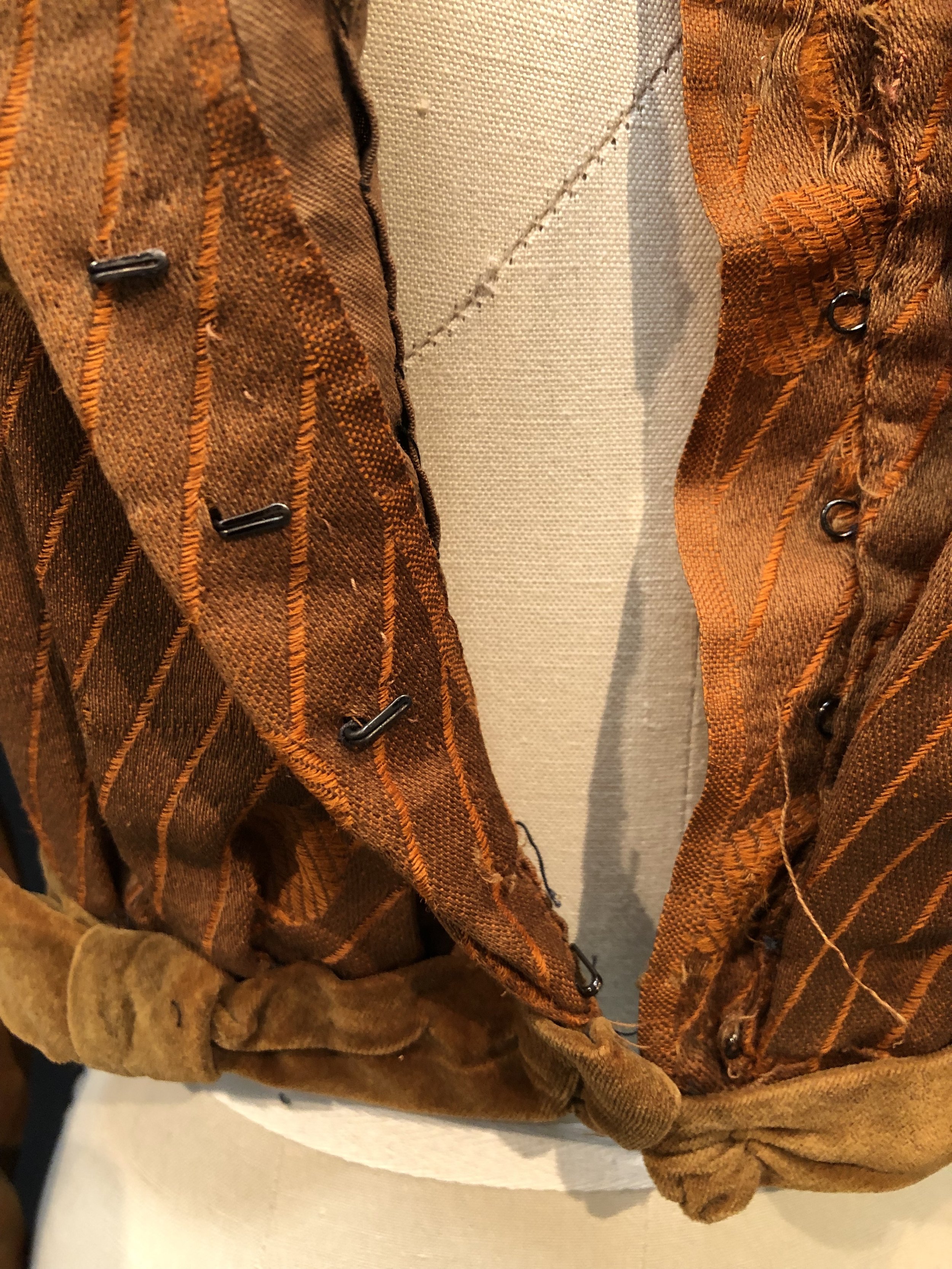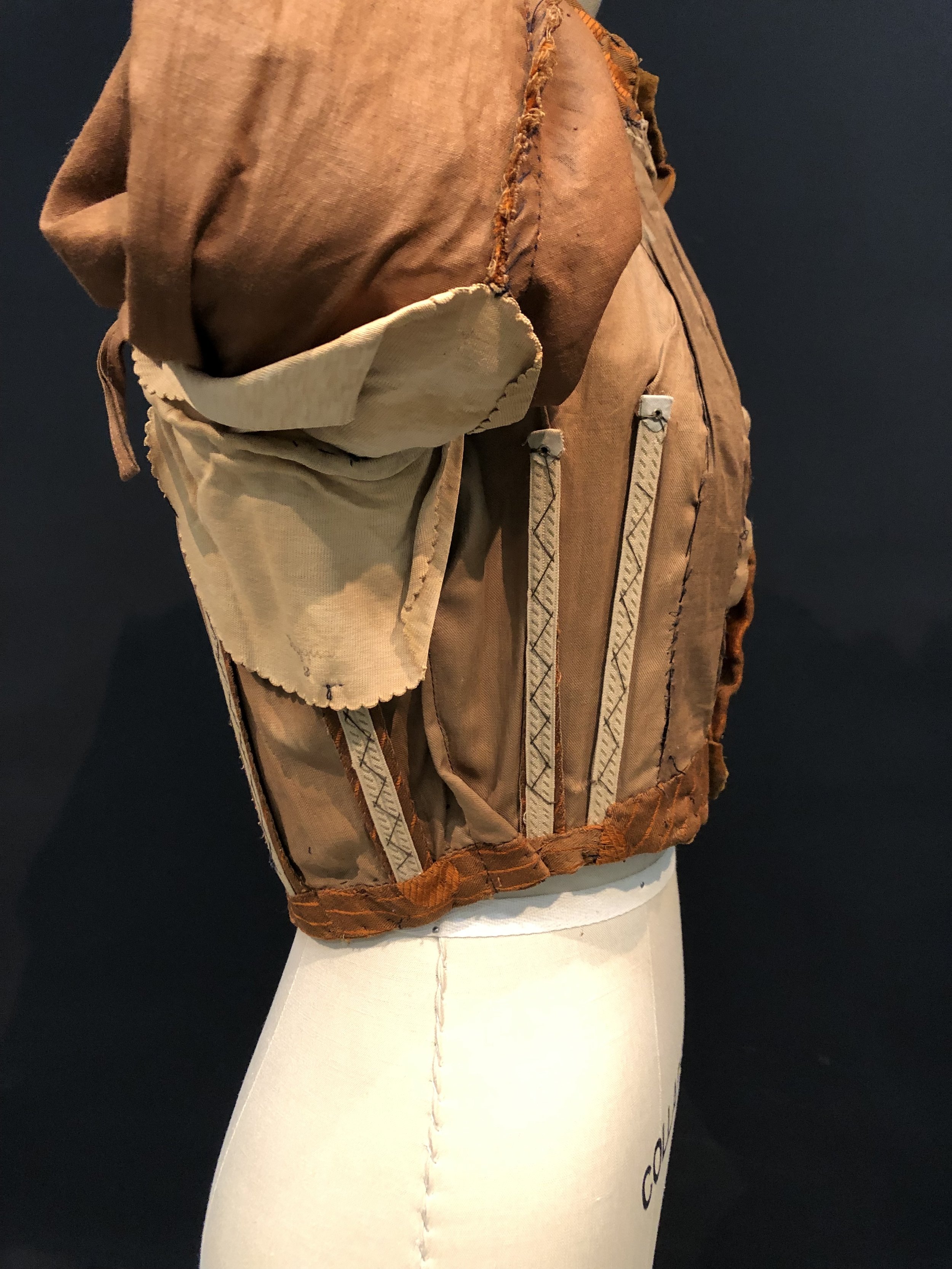
Brown and Orange Woman’s Bodice
The purpose of this assignment was to be handed a mystery garment and through reasearch discover the history behind the piece.
-
This garment originates in two parts. The first part being the origin of the circle and stripe patterned fabric. The fabric used for the main body of this garment was purchased in Norway before Beathe Hvalstad immigrated to the United States in 1880.
It is then assumed the fabric was passed down through the family before it’s second origin the fabrication of bodice itself. The fabric is sewn into a bodice by Anna Nelson in her early adulthood 1905-1907.
-
Fabric Fiber Content – The patterned fabric is a silk and wool blend satin twill weave, with brown velvet used for trim, and tan light weight linen used for lining.
The bodice was manufactured both by hand and machine with finishing details all being hand sewn in navy blue thread.
It seems highly likely that the pattern for the bodice came off a preexisting garment owned by the family since the style for the time period would have already been dated. That being said the maker might have chosen an eccentric silhouette to match the already eccentric main fabric.
-
The garment is secure enough to handle without gloves and has stood the test of time remarkably well. The main fabric has certain spots in which the fibers are separating, not uncommon with fabric blends. The velvet has faded to a slightly off color and the original green toned brown can be found in certain areas not traditionally exposed to light. There is an additional patchwork of linen lining on the inside the wearers left breast. One bone seems to have fallen off and been repaired albeit onto a slightly different position. The back waist is much lower than the front, it’s unclear if this is due to age or was originally intended to be shaped that way. It is also possible that the back stretched under the weight of the skirt due to the internal skirt loops on the interior back.
This garment was also altered in the 1970’s by the donor, Hugh Hanson’s mother, to be worn in a parade as a costume. The alteration has since been removed but the stitch lines of the added darts are still present to a keen eye along the interior linen.
-
The garment itself is not symmetric and was manufactured by one woman without formalized training. This document is a combination of what can be visually inferred and what can be assumed from current practices. There is little evidence of interfacing, but it is included in this pattern for functionality. Not included in the patterning is sweat pads under the arm tacked on the armpit but they are present in the original.























